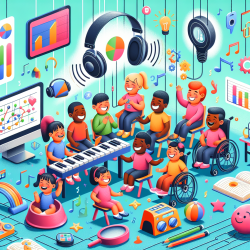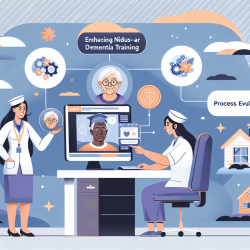In the evolving landscape of speech-language pathology, assistive technology (AT) plays a pivotal role in enhancing the lives of differently-abled individuals, including children. The recent research article titled Discernment on assistive technology for the care and support requirements of older adults and differently-abled individuals provides valuable insights into the applications, challenges, and future research avenues of AT. This blog post aims to distill key findings from the study to help practitioners improve their skills and encourage further research in this vital field.
Understanding the Scope of Assistive Technology
Assistive technology encompasses a wide range of devices designed to aid individuals with physical, cognitive, or sensory impairments. From simple hand-held devices to complex robotic systems, AT helps individuals achieve greater independence and improves their quality of life. The research identifies various application fields of AT, including:
- Mental Health: Devices for dementia and autism support cognitive and social functions.
- Mobility: Exoskeletons and knee braces assist in physical rehabilitation and mobility.
- Communication: Augmentative and alternative communication (AAC) systems aid those with speech impairments.
- Personal Emergency Response Systems: Wearable devices that ensure safety and quick response in emergencies.
Key Findings and Their Implications
The research highlights several important findings that can be directly applied to practice:
- Customization and AI Integration: Customizable AT devices that leverage artificial intelligence can better meet individual needs, making them more effective and user-friendly.
- Economic Considerations: Cost-benefit analyses are crucial for the widespread adoption of AT. Practitioners should advocate for affordable solutions that do not compromise on quality.
- Caregiver Involvement: The role of caregivers is critical in the effective use of AT. Training and support for caregivers can enhance the benefits of AT for children.
Challenges and Future Research Directions
Despite the promising advancements, several challenges remain:
- Limited Study Populations: Many studies have small sample sizes, making it difficult to generalize findings. Larger, more diverse studies are needed.
- Standardization: There is a need for standardized protocols and lexicons for AT devices to ensure consistency and reliability.
- User Attitudes: Encouraging positive attitudes towards AT among users and caregivers is essential for successful implementation.
Future research should focus on developing multidisciplinary, AI-driven AT solutions that are affordable and widely accessible. Exploring qualitative methods to understand the user experience and integrating feedback into device design will also be crucial.
Conclusion
Assistive technology holds immense potential to transform the lives of differently-abled children. By integrating the insights from recent research, practitioners can enhance their skills and contribute to the ongoing development of effective AT solutions. For those interested in delving deeper into this topic, I encourage you to read the original research paper, Discernment on assistive technology for the care and support requirements of older adults and differently-abled individuals.










